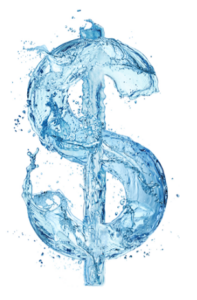Ways Your City Benefits From a Water Utility Rate Study
By Damon Tsouklis
 Performed regularly, water utility rate studies provide transparency into what your utility can expect in the years ahead. They ensure you have the financial resources needed to meet your budget, maintain your infrastructure, grow your distribution system, explore new technologies, and implement your capital improvement plan (CIP).
Performed regularly, water utility rate studies provide transparency into what your utility can expect in the years ahead. They ensure you have the financial resources needed to meet your budget, maintain your infrastructure, grow your distribution system, explore new technologies, and implement your capital improvement plan (CIP).
A utility rate study is a financial review of a water utility that projects future revenue and expenses, usually for the next five years. It determines whether your operating revenues are sufficient to meet your expenses, the cost of operations and maintenance, upcoming or needed replacements and debt service, and helps you make capital improvements during the implementation plan period.
A utility rate study can:
Inform your total revenue requirements. Determining a municipal water utility’s revenue requirement is foundational to setting the overall level of utility rates that need to be applied and charged to users. This also provides your municipal water utility with adequate and sustainable funding levels for operations, maintenance and capital improvement expenses, and a basis for annual budgeting.
Provide revenue stability and predictability. Revenue stability and predictability prepare your municipal water utility for longterm success. They provide an accurate financial understanding of fixed assets, inventory, and the processes required to meet your utility’s distribution needs. Revenue stability and predictability also help identify when you should act to meet these needs, consistent with your CIP.
Ensure fairness in the distribution of total costs of service. Utility rate studies result in a more equitable cost-allocation methodology. Developing an equitable and actionable strategy designates the costs of providing water service to customers of all types by user categories.
Play an instrumental role in utility rate design. Utility rate studies make it possible for utility managers and board members to review your current water rate structure and provide a rate design that is cost based, justifiable to the public, and meets the specific rate design objectives needed to maintain and grow your utility.
Following are several components to consider when crafting a utility rate study:
Review water utility’s current rate structure. Consider having economic development, utility finance, and utility engineer professionals review your water utility’s current rate structure, historical financial information, planned capital improvements, and debt obligations. Factor in inflation to uncover and come up with a five-year cost estimate for your water utility based on various maintenance and growth scenarios. Next, develop a fiveyear implementation plan to align with and supplement your CIP.
Analyze current rate structure ability to generate revenue. Depending on these results, work with your water utility to adjust the rates or recommend an alternative rate structure that will meet the needs of the implementation plan.
Calculate utility rates. Utility rates are calculated based on your water utility’s revenue to meet its financial obligations and anticipated expenses, plus the funds needed to maintain sufficient cash reserves. Common rate structures include:
Uniform rates are a constant unit price for all metered volumetric units of water consumed yearly, require metered service, and can be applied to all customer classifications.
 Decreasing block rates is a rate structure in which the unit price of each succeeding block of usage is charged at a lower unit rate than the previous block(s). The number of rate blocks and the size and pricing of each block vary by utility.
Decreasing block rates is a rate structure in which the unit price of each succeeding block of usage is charged at a lower unit rate than the previous block(s). The number of rate blocks and the size and pricing of each block vary by utility.
Increasing block rates are volumetric chargers, meaning the rate per unit of water increases as the volume of consumption increases. Increasing block rates require metering and defining consumption blocks over which rates increase.
Determine whether operating revenues are sufficient. Water utility rate studies should typically be performed every three to five years. However, timing depends on what is right for your utility and service area. Some utilities raise rates annually to keep up with inflation and minimize the shock to its ratepayers; others opt for a larger increase every few years.
Develop a financial plan and cost-based rates. Raising rates and asking for more from the community is never the goal, yet often unavoidable. Help your customers understand how rates are developed; why costs may need to increase; and how their dollars are used to provide an uninterrupted supply of safe, healthy, potable, and reasonable priced water while maintaining sound and sustainable finances.
Damon Tsouklis, senior economic development professional with SEH (sehinc.com). SEH is a member of the League’s Business Leadership Council (lmc.org/sponsors).

